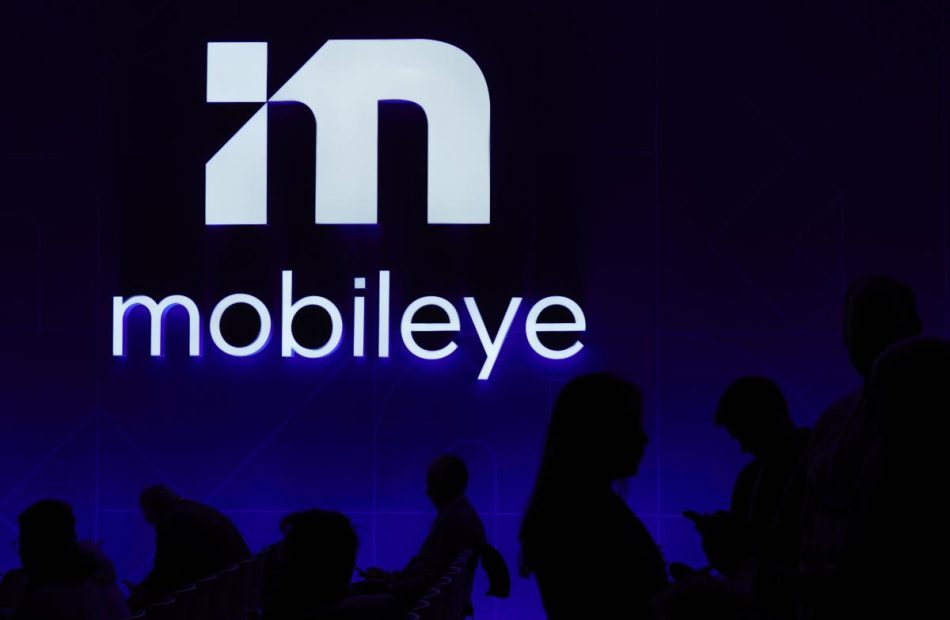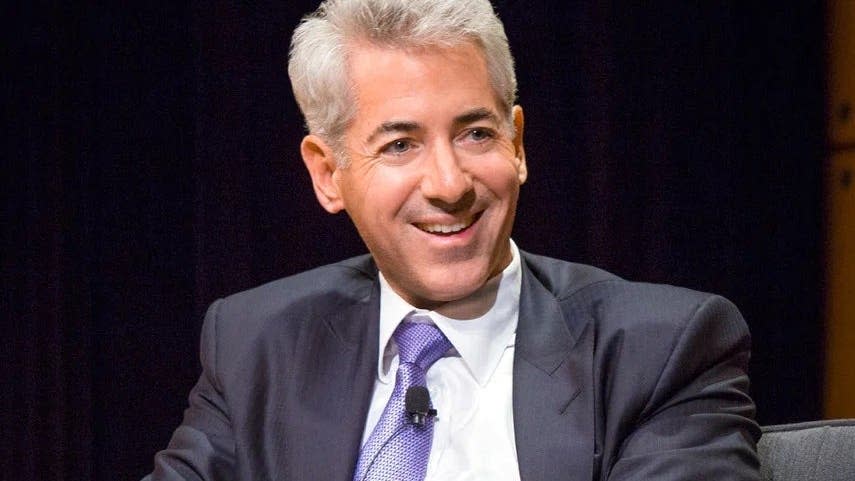1 Stock I Wouldn't Touch With a 10-Foot Pole — and Here's Why
There’s a lot to like about Cava Group (NYSE: CAVA). The Mediterranean-style restaurant chain is growing like a wildfire while generating positive bottom-line profits. I understand why many investors are excited about this thrilling growth story, sending Cava’s stock price 152% higher in the last 52 weeks.
But I’m not going anywhere near the “buy” button for Cava stock in the foreseeable future. This soaring stock is flying too close to the sun and looks overdue for a sharp price correction.
That’s life in the risky and competitive restaurant industry.
Why investors love Cava’s growth story
Again, I get it. Cava opened 62 net new restaurants over the last year, including 18 in the recently reported second quarter. Menu prices are up by 4.9% in the same span in order to tamp down inflation-based increases in ingredient costs, and foot traffic per store rose by 9.5%.
The company generated $19.7 million of net income and $22.7 million in free cash flows in the second quarter. Investors get thrilling growth and an 8% net profit margin in a single package — where do I sign up?
That’s why Cava’s shares are soaring since entering the public stock market in June 2023. Unfortunately, I don’t think the business can support these lofty stock prices.
Cava’s high valuation ratios are concerning
That brings me to the uncomfortable bit.
Cava’s stock is trading at unreasonably high valuation ratios. Yes, it’s great to see that the company is profitable but it shouldn’t be worth 15 times trailing sales, 308 times earnings, or 1,155 times free cash flows.
Those are soaring ratios in any industry, and especially in the ultra-competitive restaurant sector. True giants like McDonald’s (NYSE: MCD) and Yum! Brands (NYSE: YUM) come with single-digit price to sales ratios and profit-based valuation multiples in the 20x to 30x range. Even the fast-growing Chipotle Mexican Grill (NYSE: CMG) chain nearly fits that modest valuation profile.
Financial risks in a crowded market
Just for fun, let’s run Cava through the rigors of a discounted cash flow (DCF) calculation. This valuation method estimates a stock’s value based on the amount of cash the underlying business might generate for shareholders in the long run. Using some incredibly generous estimates for Cava’s potential cash flow growth, I still get a “fair value” estimate of just $5 per share. Yes, it’s difficult to squeeze reasonable numbers out of the DCF equation when the cash profits are just above breakeven, but that’s kind of my point here. How do you pin a fair price tag on such a risky and barely profitable business?
And the ditches of Wall Street are littered with the remains of formerly high-flying restaurant stocks. Many were seen as “the next Chipotle,” just like Cava, with ambitious expansion plans to match. In many cases, they ended up stumbling over costly growth plans at the wrong time.
Remember Zoës Kitchen, for example? That was another high-growth Mediterranean restaurant concept, opening dozens of new locations per year in its heyday with long-term plans of a nationwide presence. Well, those plans didn’t work out and Cava bought what was left of Zoës Kitchen in 2018. Some of its locations have been converted into Cava restaurants and others simply shut down.
When would I consider buying Cava stock?
In all fairness, I’m not terribly keen on restaurant stocks in general. The industry is too packed with rivals, all reaching for the same consumer wallets in different ways. My only exposure to this fracas is Toast (NYSE: TOST), a maker of restaurant management hardware and software designed to save operating costs and improve their efficiency. This industry needs all the cost-saving help it can get.
And I’m a long way away from adding any Cava stock to that portfolio. I might reconsider if the unchecked growth continues without resorting to dilutive stock sales or risky debt papers along the way — but even then, only at a much lower valuation.
So I wish the best of luck to Cava and its investors, but I’m not even a little bit tempted to own the stock right now. Come back in a few years with sustained growth and a milder share price, and maybe I’ll finally reach for that ten-foot pole.
Should you invest $1,000 in Cava Group right now?
Before you buy stock in Cava Group, consider this:
The Motley Fool Stock Advisor analyst team just identified what they believe are the 10 best stocks for investors to buy now… and Cava Group wasn’t one of them. The 10 stocks that made the cut could produce monster returns in the coming years.
Consider when Nvidia made this list on April 15, 2005… if you invested $1,000 at the time of our recommendation, you’d have $661,779!*
Stock Advisor provides investors with an easy-to-follow blueprint for success, including guidance on building a portfolio, regular updates from analysts, and two new stock picks each month. The Stock Advisor service has more than quadrupled the return of S&P 500 since 2002*.
*Stock Advisor returns as of September 3, 2024
Anders Bylund has positions in Toast. The Motley Fool has positions in and recommends Chipotle Mexican Grill and Toast. The Motley Fool recommends Cava Group and recommends the following options: short September 2024 $52 puts on Chipotle Mexican Grill. The Motley Fool has a disclosure policy.
1 Stock I Wouldn’t Touch With a 10-Foot Pole — and Here’s Why was originally published by The Motley Fool
US probes top airlines' frequent flyer programs for unfair practices
By David Shepardson and Rajesh Kumar Singh
WASHINGTON/CHICAGO (Reuters) -The U.S. Transportation Department (DOT) said on Thursday it is opening an inquiry into the four largest U.S. air carrier rewards and frequent flyer programs to ensure consumers do not face unfair, deceptive, or anticompetitive practices.
Transportation Secretary Pete Buttigieg sent letters to American, Delta, Southwest and United Airlines, ordering them to provide records and submit reports answering detailed questions on their rewards programs.
The Department is reviewing how consumers are “impacted by the devaluation of earned rewards, hidden or dynamic pricing, extra fees, and reduced competition and choice.”
Reuters first reported in December that DOT had begun scrutinizing the frequent flyer programs of major U.S. airlines for potential deceptive or unfair practices.
DOT and the Consumer Financial Protection Bureau held a public hearing in May on airline loyalty programs, while some lawmakers have also scrutinized the programs.
Buttigieg said the department is seeking “more specific data to better understand the largest rewards programs and identify potential competition or consumer protection issues or risks.”
Customers often complain airlines have been raising the bar to earn perks associated with these programs. The U.S. Congress last year considered but did not mandate requiring airlines to provide 90 days notice before devaluing frequent flyer program points.
Trade group Airlines for America, however, said U.S. airlines are transparent about frequent flyer programs “and policymakers should ensure that consumers can continue to be offered these important benefits.”
U.S. carriers relied on these programs, which have tens of millions of members, for revenue and to raise funds during the COVID-19 pandemic when travel demand plunged.
Loyalty programs of Delta, United and American were each valued more than $20 billion last year, according to consulting firm On Point Loyalty.
Delta said it has received the DOT’s inquiry and will respond.
Southwest said its flexible rewards program benefits have resulted in the carrier doubling the industry average of seats booked with points, while United and American declined comment.
(Reporting by David Shepardson in Washington and Rajesh Kumar Singh in ChicagoEditing by Chris Reese and Sandra Maler)
FCC Chief Defends Elon Musk's X And Starlink Amid Brazil's 'Punitive' Actions, Warns Business Leaders Are Questioning About It Becoming An 'Uninvestable Market'
Federal Communications Commission (FCC) Commissioner Brendan Carr said on Thursday that he wrote to Brazil telecom regulator Anatel’s President to address the ban on Elon Musk’s social media platform X and the freezing of Starlink assets.
What Happened: The Brazilian government’s decision pertaining to billionaire entrepreneur Elon Musk’s social media platform X and Starlink are part of a growing crackdown on free speech, Carr said, while adding that the action also violates Brazil’s own laws.
“These punitive actions—backed publicly by the Lula Administration—are already reverberating broadly and shaking confidence in the stability and predictability of Brazil’s regulated markets. In fact, U.S. business leaders are now openly questioning whether Brazil is on the path to becoming an uninvestable market,” Carr wrote in his letter addressed to Anatel President Carlos Baigorri.
The FCC Commissioner also condemned the decision of Brazil’s top court judge Alexandre de Moraes to freeze Starlink’s assets over disagreements with the functioning of X, noting that Starlink is a separate company with different shareholders.
The decision to ban X and freeze Starlink assets, Carr said, violates Brazil’s own laws. The FCC Commissioner also termed the decisions as “arbitrary” and “capricious.”
Carr also requested a meeting with Baigorri to address the issues. “If you prefer, I will come to you in Brazil to do so,” the commissioner wrote.
Why It Matters: Last week, the Brazilian Supreme Court blocked X citing its failure to comply with legal requirements, including paying certain fines imposed for failing to obey judicial orders and appointing a legal representative in Brazil.
While SpaceX’s Starlink initially refused to comply with Moraes’ order for all internet providers to block access to X in the country, it later complied.
The Brazilian government also froze Starlink’s bank accounts, preventing it from conducting financial transactions in the country and halting the possibility of it being used to pay X’s fines. Starlink said last week that it is continuing to pursue all “legal avenues” against the freeze on its assets and will try to provide uninterrupted internet services to its users though it cannot receive payments.
Musk himself retorted saying that he would seek the seizure of Brazilian assets in turn, but without detailing how.
Check out more of Benzinga’s Future Of Mobility coverage by following this link.
Read More:
Photo courtesy: Shutterstock
Market News and Data brought to you by Benzinga APIs
© 2024 Benzinga.com. Benzinga does not provide investment advice. All rights reserved.
Intel Is Exploring Sale of Part of Stake in Mobileye
(Bloomberg) — Intel Corp. is considering options for its stake in its struggling automated driving systems provider Mobileye Global Inc. as part of a major strategy overhaul, people with knowledge of the matter said. Shares of Mobileye fell to a record low.
Most Read from Bloomberg
The chipmaker could offload some of its 88% holding in Mobileye on the public market or via a sale to a third party, according to the people, who asked not to be identified because the information was private. Mobileye has a board meeting later this month in New York, where Intel’s plans will be considered, one of the people said.
Mobileye shares fell as much as 9.3% to $11.45 after trading opened on Friday, reaching their lowest level since the Jerusalem-based company went public via a US initial public offering in 2022.
Founded in 1999, Mobileye provides software and hardware for self-driving systems. Intel already sold part of its stake in Mobileye last year, raising about $1.5 billion from the deal.
If Intel pushes ahead with trying to raise money using more of its holding in Mobileye, it will be doing it at a difficult time. Mobileye’s stock was down about 71% this year through Thursday, leaving it with a market value of roughly $10.2 billion.
Mobileye has suffered as automakers have reduced production amid a post-pandemic supply glut across the industry. Last month, it slashed revenue forecasts and lowered its projection for adjusted operating income to well below what analysts were projecting. The company is on course for a third-straight annual loss.
The latest deliberations over Mobileye form part of broader discussions between Intel and its advisers on ways to improve performance and navigate the most difficult period in its 56-year history. Bloomberg News reported last month that the company is studying a range of strategic scenarios, including potential M&A.
Network Unit
Santa Clara, California-based Intel is separately exploring options for its enterprise networking division, the people said. The business, which is called Network and Edge and manufactures chips for use in computer and telecommunications networks, saw revenue fall by almost a third last year to about $5.8 billion, results for the period show.
Intel has made no final decisions on its stake in Mobileye, or the networking business, the people said, asking not to be identified discussing confidential information.
A representative for Intel responded in an emailed statement, “We have an unwavering focus on shareholder value creation and are executing the plan we shared last month to accelerate profitable growth and create a leaner, simpler and more agile Intel for the future.”
A spokesperson for Mobileye declined to comment.
Shares in Intel are down more than 60% this year. Chief Executive Officer Pat Gelsinger has launched an ambitious plan to regain his company’s lead in the semiconductor industry by building new plants and rapidly improving its manufacturing technology.
Intel had a net loss of $1.61 billion last quarter, and analysts are predicting more red ink for the year ahead, putting pressure on Gelsinger to pull off a turnaround. The company is discussing various scenarios, including a split of its product-design and manufacturing businesses. Intel’s board is expected to be presented with various strategic options during a meeting later in September.
–With assistance from Dinesh Nair.
(Updates share price in the third paragraph.)
Most Read from Bloomberg Businessweek
©2024 Bloomberg L.P.
If I Buy A $100,000 Annuity, How Much Cash Will It Pay Me Each Month?
An annuity is like a personal pension plan you buy for yourself. You give an insurance company a chunk of money – say $100,000 – and in return, they promise to pay you a steady income immediately or start later. It’s a way to ensure you don’t run out of money in retirement, giving you regular payments for a set number of years or even for the rest of your life.
Don’t Miss:
The payout can vary significantly depending on a few key factors, such as the type of annuity you choose, your age and gender, current interest rates and how long you want those payments to continue.
Here’s a look at how much cash you can expect each month from a $100,000 annuity:
Immediate Income Annuity:
-
For someone 65, you might get around $614 each month with an immediate income annuity.
-
If you’re a 65-year-old woman opting for a lifetime annuity, it might be closer to $608 a month.
Fixed Annuity with a Set Payout Period:
-
With a 5% interest rate and a 10-year payout, you could see about $1,055 a month.
-
If you extend that payout to 20 years, the monthly amount might drop to roughly $707.
How Age and Gender Play In:
-
Older people generally get higher monthly payouts because the payments are expected to last for a shorter time. For example, a 70-year-old might get slightly more than a 65-year-old.
-
Men typically receive a bit more than women because they have shorter life expectancies on average.
Trending: Are you rich? Here’s what Americans think you need to be considered wealthy.
You can purchase an annuity at almost any age, but the specifics such as the income you receive and the benefits available can vary based on your age at purchase.
Factors That Could Affect Your Payout
-
Interest Rates: Higher interest rates can mean more money in your monthly payouts.
-
Annuity Type: Immediate annuities start paying out shortly after you buy them, while deferred annuities kick in later, potentially giving you more per month due to accumulated interest.
-
Payout Duration: If you stretch out your payout period, the monthly checks might be smaller since the total amount is spread over more years.
Thinking About Alternatives?
If annuities don’t seem like the best fit for you, there are other ways to generate retirement income:
Dividend-Paying Stocks: These can give you regular income through dividends. If the company does well, those dividends might increase over time. The nice part? You can still access your original investment.
Bonds: Bonds, especially government or high-quality corporate ones, offer steady income through interest payments. They’re generally less risky than stocks but usually provide lower returns.
Real Estate: Owning rental properties can bring in regular income. While it requires some upfront capital and ongoing management, real estate can provide income and potential appreciation.
Systematic Withdrawal Plans: This approach involves withdrawing a fixed percentage from your investments each year. You keep control over your investments, but you risk running out of money if you withdraw too much too quickly.
Annuities can be great, but you’ll need to know the good and the bad to make an informed decision. Here are a few things to consider:
-
Liquidity: Annuities often tie up your money, making it tough to access in a pinch. Alternatives like stocks or bonds are more flexible.
-
Inflation: Fixed annuities give you consistent payments but don’t adjust for inflation. On the other hand, stocks or real estate might offer growth potential that helps keep up with inflation.
-
Longevity: Annuities are great for guaranteeing income for life, which is handy if you’re worried about outliving your savings. Other options might require a bit more careful planning to ensure they last through retirement.
Trending: Can you guess how many retire with a $5,000,000 nest egg? – How does it compare to the average?
This should give you a pretty good idea of what to expect and think about. Before jumping into an annuity contract, consider talking to a financial advisor. These experts can help determine what fits best with your goals and situations – whether that’s an annuity or another investment option.
Read Next:
“ACTIVE INVESTORS’ SECRET WEAPON” Supercharge Your Stock Market Game with the #1 “news & everything else” trading tool: Benzinga Pro – Click here to start Your 14-Day Trial Now!
Get the latest stock analysis from Benzinga?
This article If I Buy A $100,000 Annuity, How Much Cash Will It Pay Me Each Month? originally appeared on Benzinga.com
© 2024 Benzinga.com. Benzinga does not provide investment advice. All rights reserved.
Fluent, Inc. to Participate in the 17th Annual Barrington Research Virtual Fall Investment Conference
NEW YORK, Sept. 06, 2024 (GLOBE NEWSWIRE) — Fluent, Inc. FLNT, a partner monetization and customer acquisition solutions leader, today announced that Don Patrick, Chief Executive Officer, and Ryan Perfit, Interim Chief Financial Officer, will participate in the 17th Annual Barrington Research Virtual Fall Investment Conference on Thursday, September 12, 2024. Mr. Patrick and Mr. Perfit will be available for one-on-one meetings throughout the day.
About Fluent, Inc.
Fluent, Inc. FLNT has been a leader in performance marketing since 2010, offering customer acquisition and partner monetization solutions that exceed client expectations. Leveraging untapped channels and diverse ad inventory across partner ecosystems and owned sites, Fluent connects brands with consumers at the most optimal moment, ensuring impactful engagement when it matters most. Constantly innovating and optimizing for performance, Fluent unlocks additional revenue streams for partners and empowers advertisers to acquire their most valuable customers at scale. For more insights, visit https://www.fluentco.com/.
Contact Information:
Investor Relations
Fluent, Inc.
InvestorRelations@fluentco.com

Market News and Data brought to you by Benzinga APIs
© 2024 Benzinga.com. Benzinga does not provide investment advice. All rights reserved.
SkyRun Vacation Rentals Names Cord Thomas President and Chief Operating Officer
Premiere Property Management Franchise Taps QSR Veteran to Lead Brand’s Expansion and Development
BROOMFIELD, Colo., Sept. 5, 2024 /PRNewswire/ — SkyRun Vacation Rentals (SkyRun), a premier property management franchise in the vacation rental marketplace, today announced that Cord Thomas has been appointed President and Chief Operating Officer. His addition to the franchise’s leadership team comes as SkyRun looks to further its growth into new markets across the country, building on the record rate of expansion spearheaded by former CEO, Lukas Krause.
Krause will continue to serve the franchise as Chairman and shareholder. A transition he made as a means to continue providing high-level strategic support to the brand, while making room for new leadership to be able to focus on operational efficiencies and business growth.
Thomas comes to SkyRun after 16 years spent in franchising, where he served as President and Founding Partner for Elevation Burger, which sold back in 2019. More recently, he was the Chief Executive Officer for an award-winning Neapolitan pizzeria, where he drove businesses development, oversaw real estate and finance strategies, and grew system-wide profitability.
“In the last 20 years, SkyRun has developed an industry reputation for being the gold standard in short term rental quality and experience,” said Thomas. “I’m incredibly excited to join this team and further develop the brand’s industry standing; equipping franchisees with the resources and expertise they need to help homeowners navigate and thrive amidst the complexities of today’s vacation rental market.”
Over the next thirty days, Thomas will meet with franchisees across the country, taking the opportunity to listen and better understand the improvements that can be made under his leadership and how SkyRun can continue to provide best in class property management services to homeowners nationwide.
“The real value of SkyRun’s property management services lies in the localized operations that franchisees bring to each market. Through this model, homeowners work with a team of professionals that live, work, and play in the community and who understand the unique challenges that their neighbors face—all without sacrificing the tools, technology, and reach that are needed to stay ahead in an increasingly competitive rental landscape,” said SkyRun Co-founder and Managing Partner Steve Falk. “That’s our differentiating factor, which, when paired with Cord’s experience in scaling and operating emerging franchise brands, I’m confident will continue to build the SkyRun brand’s name and market share in the vacation rental space.”
To learn more about SkyRun Vacation Rentals and its franchise opportunities, visit www.skyrun.com/franchising.
ABOUT SKYRUN VACATION RENTALS
SkyRun is a rapidly growing vacation rental property management franchise with over 1,400 homes under management in 50 independently owned and operated locations. The brand represents the best of both worlds when it comes to vacation rental management by combining the advantages of local ownership and management with the efficiency, technology, and support of a national brand. Most recently, the franchise was named by Entrepreneur magazine as one of the Fast-Growing Franchises in North America, as well as being one of the country’s Top-Emerging Franchises. Whether you are a guest, a homeowner, or a franchisee—with SkyRun, your vacation rental dreams can become a reality sooner than you think.
MEDIA CONTACT: Conner Gossel, Fishman Public Relations, cgossel@fishmanpr.com or (937) 545-9812
![]() View original content to download multimedia:https://www.prnewswire.com/news-releases/skyrun-vacation-rentals-names-cord-thomas-president-and-chief-operating-officer-302236863.html
View original content to download multimedia:https://www.prnewswire.com/news-releases/skyrun-vacation-rentals-names-cord-thomas-president-and-chief-operating-officer-302236863.html
SOURCE SkyRun Vacation Rentals
Market News and Data brought to you by Benzinga APIs
© 2024 Benzinga.com. Benzinga does not provide investment advice. All rights reserved.
1 Vanguard ETF That Could Soar 37.1% Before the End of 2024, According to a Select Wall Street Analyst
Wall Street analysts don’t always make accurate predictions, but Tom Lee from Fundstrat Global Advisors has put together a string of impressive calls over the last couple of years. He said the S&P 500 index would hit 4,750 in 2023, and it closed the year at 4,769. He then predicted the S&P would hit 5,200 in 2024, which was the most bullish target on Wall Street at the time, and it surpassed that level within the first three months.
Lee also forecast a 50% gain this year for the Russell 2000, an index featuring approximately 2,000 of the smallest companies listed on U.S. stock exchanges. The potential for falling interest rates combined with cheap valuations are two key reasons for his prediction.
The Russell 2000 hit its high point for 2024 (so far) on July 16, and Lee came out on that very day and reiterated his bullish stance in an interview on CNBC. But the index has been trading down since then, and it’s sitting on a gain of just 10% for the year. That means it will have to climb by another 37.1% within the next four months to hit Lee’s target.
While that seems unlikely, the Vanguard Russell 2000 ETF (NASDAQ: VTWO) closely tracks the performance of the index, so it’s a simple way for investors to profit from Lee’s prediction if he turns out to be right.
The Vanguard ETF is a simple way to invest in small-caps
The composition of the Russell 2000 is very different from mainstream indexes like the S&P 500. The industrial sector is the largest in the Russell with an 18.9% weighting, followed by the healthcare sector at 15.1% and the financial sector at 15%. The largest sector in the S&P 500, on the other hand, is technology, with a sizable 31.4% weighting thanks to the rise of trillion-dollar tech giants like Apple, Microsoft, and Nvidia.
Plus, the top 10 holdings in the Vanguard Russell 2000 ETF represent just 3.2% of the total value of its portfolio, so its performance isn’t beholden to a handful of stocks:
|
Stock |
Vanguard ETF Portfolio Weighting |
|---|---|
|
1. Insmed |
0.41% |
|
2. FTAI Aviation |
0.40% |
|
3. Sprouts Farmers Market |
0.36% |
|
4. Vaxcyte |
0.31% |
|
5. Applied Industrial Technologies |
0.30% |
|
6. Fluor |
0.30% |
|
7. Fabrinet |
0,29% |
|
8. SPS Commerce |
0.29% |
|
9. UFP Industries |
0.29% |
|
10. Mueller Industries |
0.29% |
Data source: Vanguard. Portfolio weightings are accurate as of July 31, 2024, and are subject to change.
Insmed is a biotechnology company that develops therapies for rare diseases. It has a market capitalization of just $13.1 billion, and as the largest holding in the Vanguard ETF, it puts the size of the Russell 2000 companies in perspective.
Sprouts Farmers Market, on the other hand, is a grocery chain with over 400 stores (and growing) across America. It specializes in healthy and organic foods. Then, there is Fluor, a construction and engineering company that builds energy and urban infrastructure.
Outside of its top 10, the Vanguard ETF also holds popular names like clothing retailer Abercrombie and Fitch, cybersecurity powerhouse Tenable, and semiconductor-service company Axcelis Technologies. Simply put, the ETF (and, by extension, the Russell 2000) is very diversified.
Falling interest rates should benefit small-caps
“The time has come for policy to adjust.” Those were the words of Federal Reserve chairman Jerome Powell at the Jackson Hole Economic Symposium last month. The Fed has been locked in a battle to tame high inflation for the last two years, which saw the federal funds rate climb to a 23-year high of 5.33% in 2023, where it remains today.
But with the Consumer Price Index measure of inflation nearly back to the Fed’s 2% annualized target, the central bank looks set to cut rates at its next meeting on Sept. 17 and 18. In fact, according to the CME Group‘s FedWatch tool, there could also be cuts in both November and December.
Lower interest rates tend to benefit small companies more than their larger counterparts. Behemoths like Apple, Microsoft, and Nvidia are sitting on so much spare cash that they each return tens of billions of dollars to shareholders every year through dividends and stock buybacks. In other words, they don’t need to rely on debt financing.
Smaller companies, however, often borrow money to fuel their growth, and they tend to carry a high amount of floating-rate debt, which is highly sensitive to changes in interest rates. Falling rates will increase the borrowing capacity of small-cap companies and reduce their interest payments which will be a direct tailwind for their earnings.
Lee thinks those factors could also drive the valuation of the Russell 2000 higher. Right now, the index trades at a price-to-earnings (P/E) ratio of 17.7 (excluding companies with negative earnings), which is much cheaper than the S&P 500, which trades at a P/E ratio of 27.4.
With that said, investors pay a premium for the S&P 500 because of the quality of its constituents like Nvidia, Apple, and Microsoft, which have long-term track records of success, secure revenue streams, and fortress balance sheets. It’s possible the Russell 2000 will trade at a higher valuation when interest rates fall, but I don’t expect it to completely close the gap with the S&P.
Will Tom Lee be right?
Lee’s prediction for a 50% return in the Russell 2000 this year is ambitious. In fact, going all the way back to 1988, the index has never recorded an annual gain of 50% or more.
The Vanguard Russell 2000 ETF has delivered a compound annual return of 10.4% since its inception in 2010, so a 50% move would be highly unusual. That also represents a notable underperformance relative to the S&P 500, which has delivered a compound annual return of 13.7% over the same period.
Keep in mind that the federal funds rate was below 1% for the majority of the period between 2010 and 2022, and that wasn’t enough to propel the Russell to outsized returns. The Russell 2000 could climb further in the remainder of 2024, but it’s unrealistic to expect a 37.1% gain from here to reach Lee’s year-end target.
With that said, small caps might be a good place to invest some money as interest rates fall, so adding the Vanguard Russell 2000 ETF to a balanced portfolio isn’t necessarily a bad move.
Should you invest $1,000 in Vanguard Russell 2000 ETF right now?
Before you buy stock in Vanguard Russell 2000 ETF, consider this:
The Motley Fool Stock Advisor analyst team just identified what they believe are the 10 best stocks for investors to buy now… and Vanguard Russell 2000 ETF wasn’t one of them. The 10 stocks that made the cut could produce monster returns in the coming years.
Consider when Nvidia made this list on April 15, 2005… if you invested $1,000 at the time of our recommendation, you’d have $661,779!*
Stock Advisor provides investors with an easy-to-follow blueprint for success, including guidance on building a portfolio, regular updates from analysts, and two new stock picks each month. The Stock Advisor service has more than quadrupled the return of S&P 500 since 2002*.
*Stock Advisor returns as of September 3, 2024
Anthony Di Pizio has no position in any of the stocks mentioned. The Motley Fool has positions in and recommends Apple, Microsoft, Nvidia, and SPS Commerce. The Motley Fool recommends CME Group, Sprouts Farmers Market, and UFP Industries and recommends the following options: long January 2026 $395 calls on Microsoft and short January 2026 $405 calls on Microsoft. The Motley Fool has a disclosure policy.
1 Vanguard ETF That Could Soar 37.1% Before the End of 2024, According to a Select Wall Street Analyst was originally published by The Motley Fool
Billionaire Ray Dalio's Former Hedge Fund Is Buying These 3 Top Dividend Stocks. Should You?
Savvy investors often look to billionaire portfolios for quality dividend stock ideas. Ray Dalio, founder of Bridgewater Associates, has a stellar reputation for spotting promising investments. Despite Dalio’s retirement in 2022, his influence remains evident in the hedge fund’s recent moves.
In the second quarter of 2024, Bridgewater Associates purchased shares of three tier 1 dividend stocks: ExxonMobil (NYSE: XOM), Medtronic (NYSE: MDT), and Microsoft (NASDAQ: MSFT). Let’s examine each of these stocks to determine if they deserve a place in your dividend portfolio.
ExxonMobil: An energy giant with an attractive yield
ExxonMobil, one of the world’s largest integrated oil and gas companies, has long been a favorite among dividend investors. The company offers a compelling yield of 3.29% with a conservative payout ratio of 44.9%. Over the past decade, ExxonMobil has grown its dividend at a modest rate of 2.66% annually.
The stock’s performance has been mixed, with a 10-year return of 16.5% excluding dividends. However, when including reinvested dividends, the total return jumps to 80.1%. While impressive, this still lags the S&P 500‘s total return (including dividends) of 231% over the same period. ExxonMobil currently trades at an attractive forward price-to-earnings (P/E) ratio of 12.1.
Upside catalysts for ExxonMobil include its response to shareholder concerns, such as reduced spending, new board appointments, and emission reduction targets. The company’s shift toward liquids pricing and high-value integrated operations could improve cash margins, particularly with new volumes from the Permian Basin and Guyana.
However, ExxonMobil faces significant downside risks. The company’s continued investment in long-life hydrocarbon projects could lead to stranded assets if oil demand peaks and declines sooner than expected. Additionally, ExxonMobil’s relatively low investment in low-carbon businesses compared to peers may pose challenges in adapting to a changing energy landscape.
Medtronic: A top healthcare innovator
Medtronic, a global leader in medical technology, offers a compelling combination of stability and growth potential. The stock yields 3.15%, although its high payout ratio of 93.2% may raise some eyebrows. Over the past decade, Medtronic has grown its dividend at a healthy rate of 6.3% annually.
The company’s stock performance has been modest, with a 10-year return of 38.3% excluding dividends and a total return of 75.7% including reinvested dividends. Like ExxonMobil, this trails the S&P 500’s performance. Medtronic trades at a forward P/E ratio of 16.3.
Medtronic’s upside potential stems from its dominant market position in core heart devices, spinal products, insulin pumps, and neuromodulators. The company’s robust pipeline, including treatments for atrial fibrillation, mitral valve disease, and renal denervation for hypertension, could open up new large markets. Medtronic’s innovative approach to applying familiar technologies to new medical challenges is another strength.
On the downside, Medtronic faces increasing competition in the insulin pump market, which could threaten its leadership position. The company is also indirectly subject to Medicare reimbursement rates, and increasing pressure on payments could hurt profitability. Product recalls, although infrequent, remain a concern that requires ongoing attention and resources.
Microsoft: A tech giant with a growing dividend
Microsoft might not be the first name that comes to mind for dividend investors, but the tech giant has been steadily increasing its payout. The stock offers a modest yield of 0.73% with a conservative payout ratio of 24.8%. Over the past decade, Microsoft has grown its dividend at an impressive rate of 7.6% annually.
Where Microsoft truly shines is in its stock performance. The company has delivered a staggering 10-year return of 810% excluding dividends, and a total return of 965% including reinvested dividends. This significantly outperforms the S&P 500. Microsoft trades at a premium forward P/E ratio of 30.8, reflecting high growth expectations.
Microsoft’s upside potential is driven by its strong position in the public cloud market with Azure, which is benefiting from the evolution to hybrid and public cloud environments. The continued success of Microsoft 365, with customers willing to pay for better security and additional features, is another growth driver. Microsoft’s dominant positions in operating systems and office software serve as cash cows to fuel growth in other areas.
However, Microsoft faces some downside risks. The momentum in shifting to subscriptions is slowing, particularly in mature products like Office. The company lacks a meaningful mobile presence, which could be a disadvantage in an increasingly mobile-first world. Additionally, Microsoft is not the top player in some of its key growth areas, notably Azure and Dynamics, which could limit its potential in these markets.
Should you follow Bridgewater’s lead?
Dalio‘s Bridgewater Associates has been buying three diverse dividend stocks, each offering unique attributes for income-focused investors. ExxonMobil provides a high yield and long dividend history, but it operates in a rapidly changing energy sector. Medtronic offers stability and growth potential in the high-growth healthcare industry. Microsoft, while offering a lower yield, sports a strong dividend growth record backed by a powerful tech business.
Are these dividend stocks worth buying? For income investors, ExxonMobil, Medtronic, and Microsoft are always worth considering. These three companies have shown a rock-solid commitment to rewarding shareholders with regular dividend payments and increases to their quarterly cash distributions. They also sport entrenched market positions, ensuring long-term profitability.
So, if you’re looking for a trio of top dividend stocks to add to your portfolio, these three Bridgewater Associates holdings may be worth a closer look.
Should you invest $1,000 in Microsoft right now?
Before you buy stock in Microsoft, consider this:
The Motley Fool Stock Advisor analyst team just identified what they believe are the 10 best stocks for investors to buy now… and Microsoft wasn’t one of them. The 10 stocks that made the cut could produce monster returns in the coming years.
Consider when Nvidia made this list on April 15, 2005… if you invested $1,000 at the time of our recommendation, you’d have $661,779!*
Stock Advisor provides investors with an easy-to-follow blueprint for success, including guidance on building a portfolio, regular updates from analysts, and two new stock picks each month. The Stock Advisor service has more than quadrupled the return of S&P 500 since 2002*.
*Stock Advisor returns as of September 3, 2024
George Budwell has no position in any of the stocks mentioned. The Motley Fool has positions in and recommends Microsoft. The Motley Fool recommends Medtronic and recommends the following options: long January 2026 $395 calls on Microsoft, long January 2026 $75 calls on Medtronic, short January 2026 $405 calls on Microsoft, and short January 2026 $85 calls on Medtronic. The Motley Fool has a disclosure policy.
Billionaire Ray Dalio’s Former Hedge Fund Is Buying These 3 Top Dividend Stocks. Should You? was originally published by The Motley Fool
Billionaires Are Buying Retail Stocks, Shrugging Off Recession Fears
Benzinga and Yahoo Finance LLC may earn commission or revenue on some items through the links below.
Investors closely track investments made by billionaires worldwide, especially in a volatile market backdrop. While U.S. equities overwhelmingly rallied in August, key benchmark indexes traded lower during the first week of September as the markets waited for the release of key employment data. Market volatility has risen dramatically over the past week, as evident from the CBOE Volatility Index’s 31% gains over the past five days.
However, billionaires are shrugging off looming recession fears that have grappled the broader market, reflecting their faith in the U.S. economy. Some of the world’s wealthiest and most influential financiers are doubling down on retail stocks. These moves suggest deep confidence in the resilience of consumer-facing businesses.
Don’t Miss Out:
Retail Stocks: A Comeback Story
The retail sector has been at the center of economic debate recently. Rising inflation, supply chain disruptions, and geopolitical tensions have all contributed to a murky outlook for consumer markets.
Nonetheless, consumers are spending money despite the delayed rate cuts, as advanced retail sales rose by 1% month-over-month in July, beating the 0.2% consensus estimate.
“Once again, this was further evidence that the U.S. consumer still can surprise to the upside,” Richard de Chazal, macro analyst at William Blair, said. “This was another solid report, and inconsistent with a consumer who is on the brink of collapse.”
Furthermore, the U.S. GDP rose by an estimated 3% in the second quarter of 2024, according to data published by the Bureau of Economic Analysis.
This, coupled with noteworthy investments from Wall Street’s biggest names, could signal a bull market for retail stocks. Their investments often serve as a strong endorsement of their ability to grow and prosper in a fluctuating economy.
Bill Ackman’s Bet on Nike
With a net worth of over $9 billion, Bill Ackman is a controversial yet highly respected hedge fund manager known for his bold and contrarian investment bets. He often leverages his social media presence to generate enthusiasm regarding his latest investments and strategic bets.
Ackman spent the last few months trying to launch a new closed-end fund, Pershing Square USA, which could double his total assets under management. However, his fund’s initial public offering was scrapped on July 31 as he couldn’t garner the desired funding.
Nonetheless, Ackman’s latest investment in Nike, Inc. (NYSE:NKE) has stirred investors, as the stock made a stellar comeback after recording its worst-ever performance in June. As of the end of the second quarter of 2024, Ackman’s Pershing Square Capital Management holds over three million shares of NKE.
Nike’s slowing sales have been a cause for concern for investors. The company expected its earnings to decline by at least 10% in the fiscal first quarter of 2025 (ended August) due to sluggish demand from China. Consequently, NKE stock declined by 21% intraday following its earnings release.
Ackman’s endorsement has rejuvenated optimism about Nike stock, as NKE shares have increased by over 9% over the past month.
Read More:
Warren Buffett’s Strategic Move With Ulta Beauty Investment
Stock market guru Warren Buffett’s investment portfolio was scrutinized after the world’s sixth-richest man reduced his stake in tech behemoth Apple Inc. (NASDAQ:AAPL) last quarter. Buffett also held $277 billion in cash as of the end of the second quarter, a move that drew significant attention from Wall Street, with Elon Musk labeling it “wild.”
Buffett also invested a significant portion of his portfolio in Ulta Beauty Inc. (NASDAQ:ULTA), with his total investment valued at approximately $266 million as of June 30.
However, the company’s financials took a hit in the last quarter, as its revenues and earnings were lower than the consensus estimates for the quarter ended August 3. But Ulta Beauty’s CEO Dave Kimbell chalked this up to an “unanticipated operational disruption,” claiming they had “actions underway to address the trends.”
Nonetheless, Ulta Beauty has been taking active steps to accelerate sales, primarily through endorsements with high-profile celebrities and upscaling its loyalty program and promotional levers. The Oracle of Omaha has invested in ULTA stock, which has risen by over 10% over the past month.
A 9% Return In Just 3 Months
EquityMultiple’s ‘Alpine Note — Basecamp Series’ is turning heads and opening wallets. This short-term note investment offers investors a 9% rate of return (APY) with just a 3 month term and $5K minimum. The Basecamp rate is at a significant spread to t-bills. This healthy rate of return won’t last long. With the Fed poised to cut interest rates in the near future, now could be the time to lock in a favorable rate of return with a flexible, relatively liquid investment option.
What’s more, Alpine Note — Basecamp can be rolled into another Alpine Note for compounding returns, or into another of EquityMultiple’s rigorously vetted real estate investments, which also carry a minimum investment of just $5K. Basecamp is exclusively open to new investors on the EquityMultiple platform.
Looking for fractional real estate investment opportunities? The Benzinga Real Estate Screener features the latest offerings.
This article Billionaires Are Buying Retail Stocks, Shrugging Off Recession Fears originally appeared on Benzinga.com











